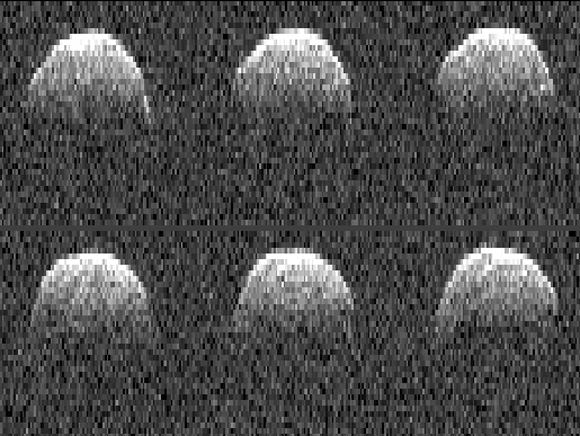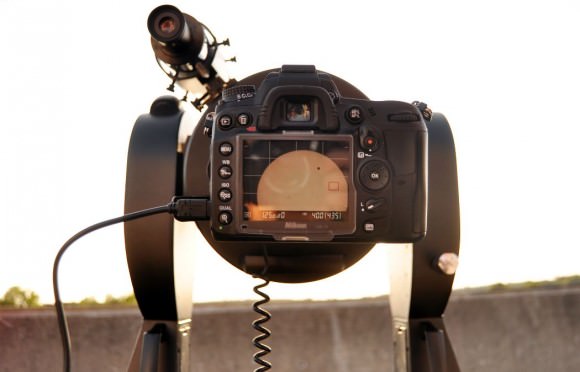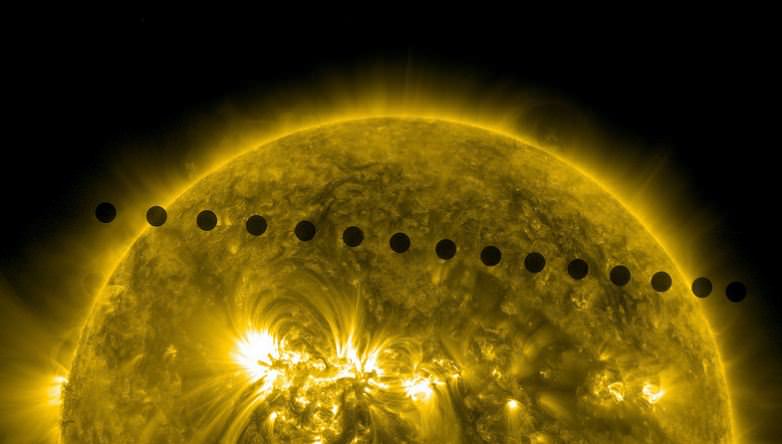Seen the movie “Prometheus” yet? If so, you may recognize one of the creatures in an eerie but beautiful prominence eruption from the Sun today. The folks at the Solar Dynamics Observatory noticed the similarity, too. This video covers almost 15 hours from the early hours of June 18, 2012, showing ultraviolet views from the AIA instrument on SDO. In addition to the hovering alien, look for a big blast from the Sun at about 0:15, too.
Continue reading ““Alien Prometheus Prominence” Hovers Over the Sun”
Astronomers Measure Sunlight’s Shove
The physical force of sunlight on a moving asteroid has been measured by NASA scientists, providing information on how to better plot these Earth-passing worlds’ future paths.
First proposed by a 19-century Russian engineer, the Yarkovsky effect is the result of an object in space absorbing radiation from the Sun and emitting it as heat, thus creating a slight-but-measurable change in its movement (thanks to Newton’s first law of motion.)
By observing the 1999, 2005 and 2011 close passes of asteroid 1999 RQ36 with the Arecibo and Goldstone radar telescopes, astronomers were able to determine how much the trajectory of the half-kilometer-wide asteroid had changed.
The researchers’ findings revealed that RQ36 shifted by 160 km – about 100 miles – over the course of those 12 years. That deviation is attributed to the Yarkovsky effect. A miniscule force in and of itself, over time it has the ability to move entire worlds (albeit relatively small ones.)
“The Yarkovsky force on 1999 RQ36 at its peak, when the asteroid is nearest the Sun, is only about a half ounce — about the weight of three grapes on Earth,” said Steven Chesley of NASA’s Jet Propulsion Laboratory in Pasadena “Meanwhile, the mass of the asteroid is estimated to be about 68 million tons. You need extremely precise measurements over a fairly long time span to see something so slight acting on something so huge.”
Using measurements of the distance between the Arecibo Observatory in Puerto Rico and RQ36 during its latest pass in 2011 – a feat that was compared by team leader Michael Nolan to “measuring the distance between New York City and Los Angeles to an accuracy of two inches” – Chesley and his team were able to calculate all the asteroid’s near-Earth approaches closer than 7.5 million km (4.6 million miles) from the years 1654 to 2135. 11 such passes were found.
In addition, observation of 1999 RQ36 with NASA’s Spitzer Space Telescope found it to have about the same density as water – that’s light, for an asteroid.
Most likely, RQ36 is a “rubble-pile” form of asteroid, composed of a conglomeration of individual chunks of material held together by gravity.
These findings will be used by NASA scientists to help fine-tune the upcoming OSIRIS-REx mission, which is scheduled to launch in 2016 to rendezvous with 1999 RQ36 and return samples to Earth in 2023. Being a loose collection of rocks is expected to aid in the spacecraft’s sample retrieval process.
The findings were presented on May 19 at the Asteroids, Comets and Meteors 2012 meeting in Niigata, Japan. Read more here.
(Top image: series of radar images of asteroid 1999 RQ36 were obtained by NASA’s Deep Space Network antenna in Goldstone, Calif. on Sept 23, 1999. Credit: NASA/JPL-Caltech)
Sun Spews Earth-Directed Flares
On June 14th, for the second day in a row, sunspot AR1504 erupted and hurled a Coronal Mass Ejection toward Earth. Spaceweather.com says the fast-moving (1360 km/s) cloud is expected to sweep up a previous CME and deliver a combined blow to Earth’s magnetic field on June 16th around 10:16 UT. So, high latitude skywatchers should be on the lookout for possible aurorae.
Continue reading “Sun Spews Earth-Directed Flares”
Active Region on the Sun Turning Toward Earth
The Solar Dynamics Observatory always provides an incredible view of our Sun, and is keeping an eye on Active Region 1504, which is turning towards Earth and has been producing several C-class solar flares and even three stronger M-class solar flares. There are also a few other Active Regions visible, 1505, 1506 and 1507. The video above starts off with a view from June 9 to 12 in the 171 angstrom wavelengths and it shows us the many coronal loops extending off of the Sun where plasma moves along magnetic field lines, then switches to the 304 angstrom view, seeing the M-class solar flares.
Continue reading “Active Region on the Sun Turning Toward Earth”
Transit of Venus Redux: More Great Images
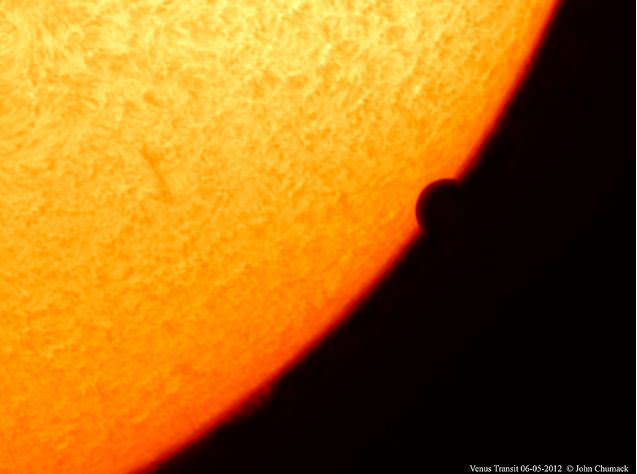
[/caption]
Images and video from the Transit of Venus on June 5/6, 2012 are still pouring in, and we needed to share just a few more. Here’s an awesome close-up look at the event in Hydrogen Alpha from accomplished astrophotographer John Chumack. He used a Lunt Solar Scope 60mm/50F H-Alpha filter and a DMK 21AF04 Fire-wire camera. This is 741 frames & 1/91 second exposure. John has more images on our Flickr page, and on his website, Galactic Images.
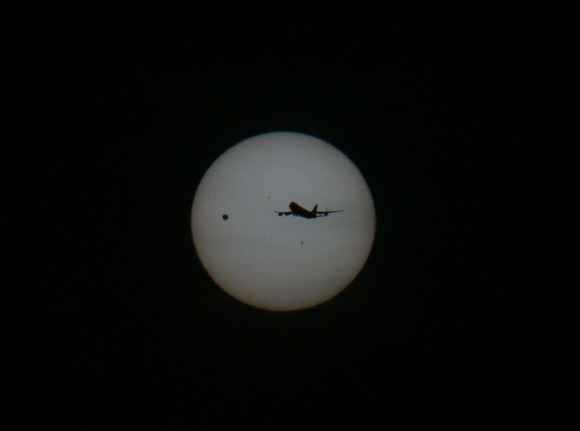
Venus transit with a transit of B747 jumbo across the solar disk which was captured by one of the members of the Tamilnadu Astronomical Society in India, Mr. Muralikrishna Kanagala during our transit event at Elliots Beach, Madras, India at 6.02 hrs IST, as the Sun rose. He used a Baader filtered Sony DSH H50 Camera.
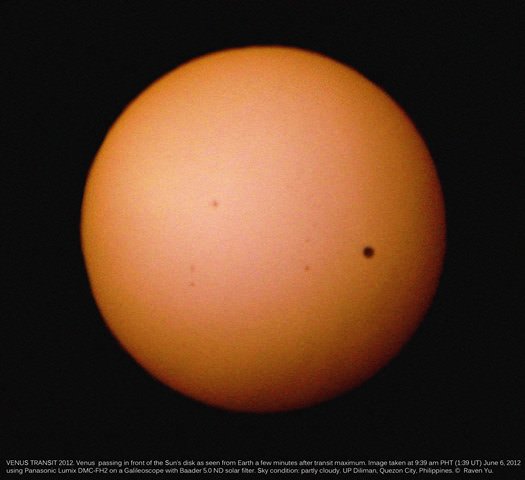
Patrick Cullis put together this amazing time-lapse of the Transit, which features two telescopes, an airplane transit, sunset, and a few different angles of the view.
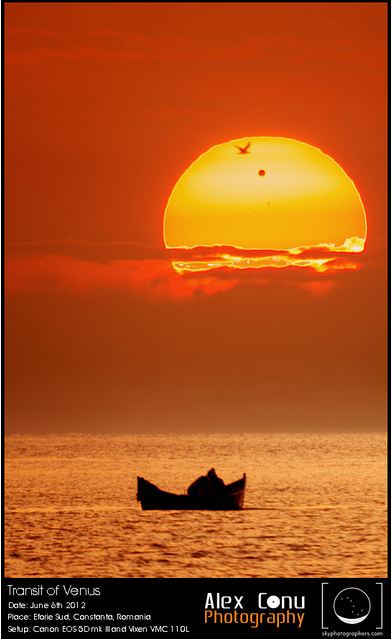
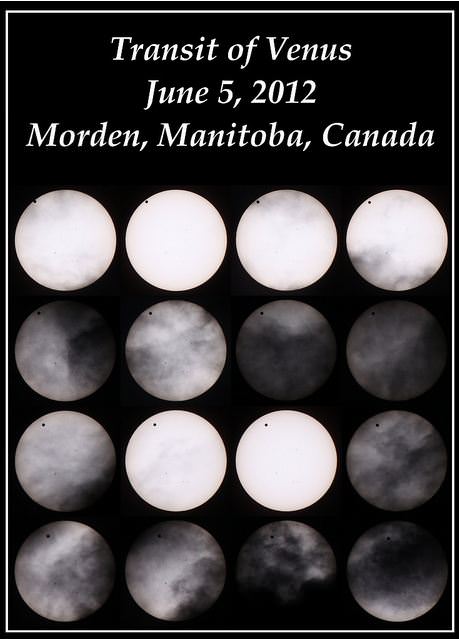
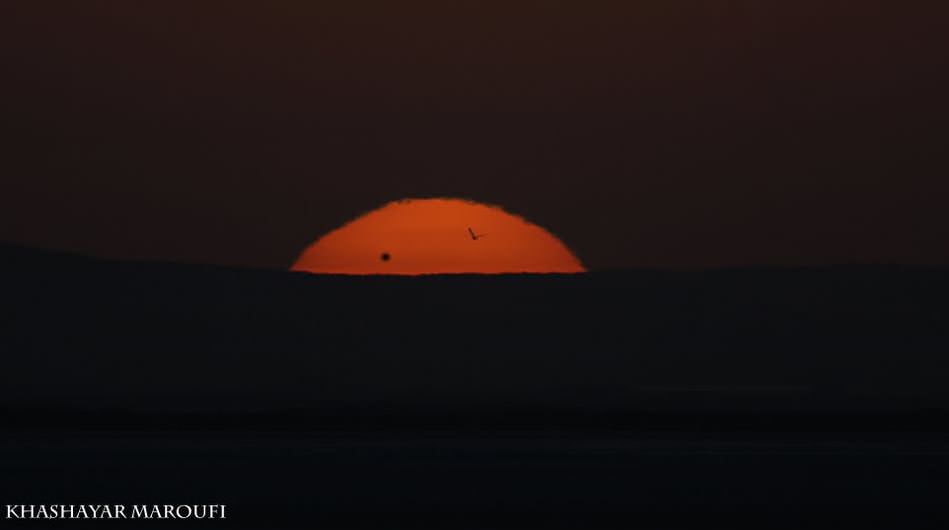
The above video is from the Solar Dynamics Observatory, a composite of the entire Transit, set to music.
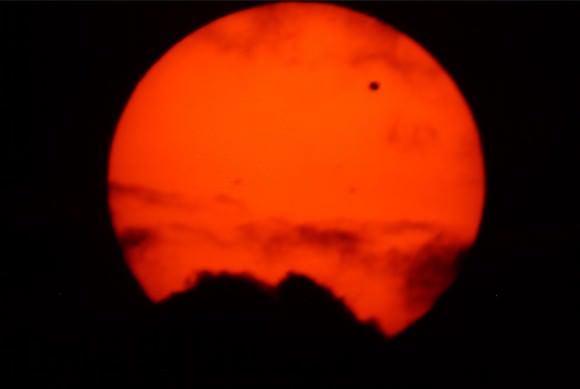
And finally, this image and story from Blake Crosby and his son Orion from Charleston, South Carolina, displaying the lengths people would go to witness this event:
“This won’t be the best shot of the transit by a long shot, but my son and I jumped through a lot of hoops just to get it,” Crosby wrote in an email. “We live in Charleston, SC and our horizon is blocked by towering pine trees so we checked into the 9th floor of a Holiday Inn with a westward facing room. After lugging up all of our equipment, we found out that the doors to the balconies had been permanently closed, so we would have to shoot through a pane of glass with our Canon Rebel XS attached to a Celestron Nexstar 4SE with a Seymour filter. Furthermore, we were greeted, like many others, with a thick wall of clouds that just didn’t want to budge. Even worse, the hotel’s wifi was so shoddy we couldn’t stream any of the live views from the internet. However, we got a lucky break at about 8:00 EDT when the clouds parted for about 2 minutes and we were able to snap a couple of pics. My son Orion remarked that he was glad we endured those setbacks just so we could get a glimpse of an event that won’t happen again in our lifetimes.”
You can always see more images of many great astronomical views on our Flickr group page. Join us in sharing your images there and we may post them on Universe Today!
Clouds part for Transit of Venus from Princeton University
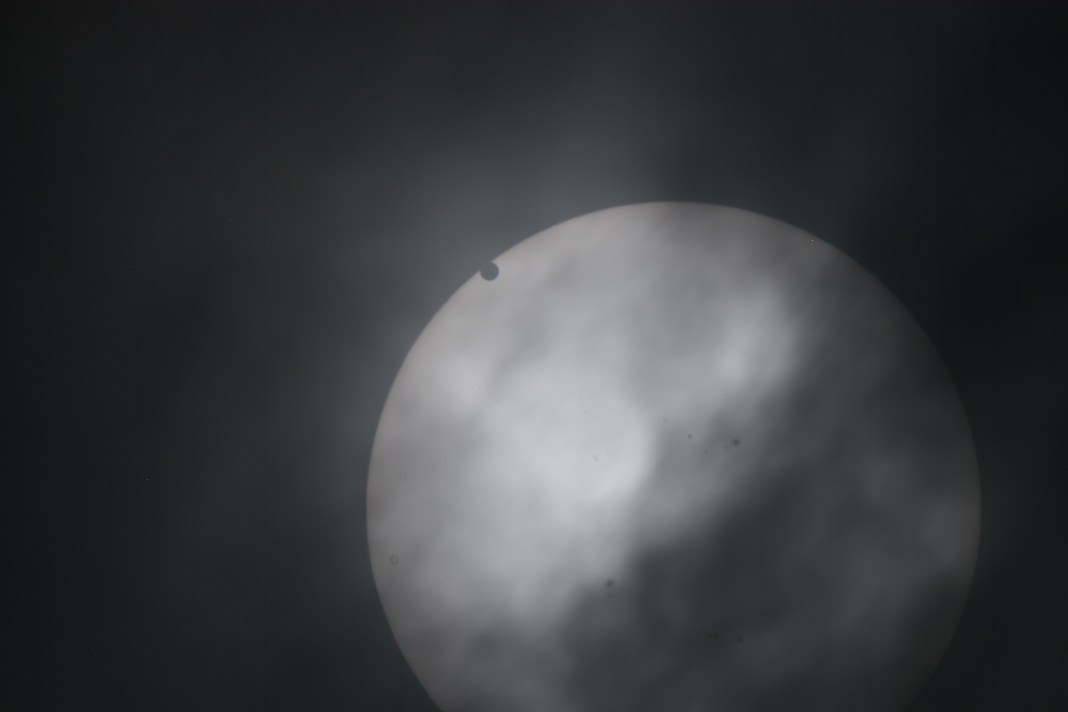
[/caption]
Despite a horrendous weather forecast, the clouds parted – at least partially – just in the nick of time for a massive crowd of astronomy and space enthusiasts gathered at Princeton University to see for themselves the dramatic start of the Transit of Venus shortly after 6 p.m. EDT as it arrived at and crossed the limb of the Sun.
And what a glorious view it was for the well over 500 kids, teenagers and adults who descended on the campus of Princeton University in Princeton, New Jersey for a viewing event jointly organized by the Astrophysics Dept and the Amateur Astronomers Association of Princeton (AAAP), the local astronomy club to which I belong.
See Transit of Venus astrophotos snapped from Princeton, above and below by Astrophotographer and Prof. Bob Vanderbei of Princeton U and a AAAP club member.
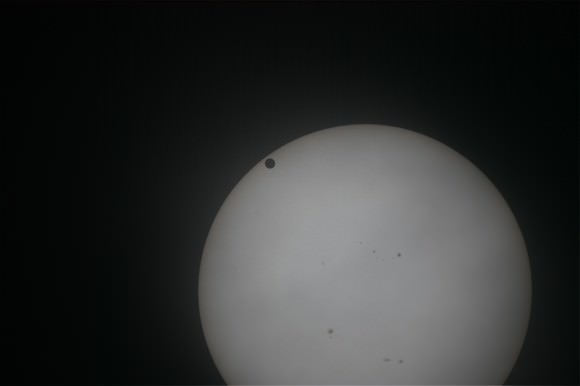
This photo was taken with a Questar telescope at 6:26 p.m. on June 5, 2012 - it’s a stack of eight - 2 second images. Stacking essentially eliminates the clouds. Hundreds attended the Transit of Venus observing event organized jointly by Princeton University Astrophysics Dept and telescopes provided by the Amateur Astronomers Association of Princeton (AAAP), local astronomy club. Credit: Robert Vanderbei
It was gratifying to see so many children and whole families come out at dinner time to witness this ultra rare celestial event with their own eyes – almost certainly a last-in-a-lifetime experience that won’t occur again for another 105 years until 2117. The crowd gathered on the roof of Princeton’s Engineering Dept. parking deck – see photos
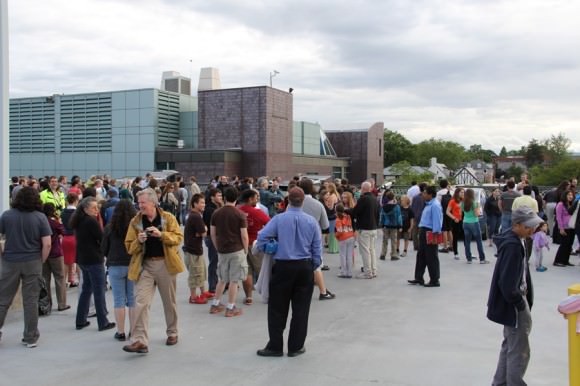
Credit: Ken Kremer
For the next two and a half hours until sunset at around 8:30 p.m. EDT, we enjoyed spectacular glimpses as Venus slowly and methodically moved across the northern face of the sun as the racing clouds came and went on numerous occasions, delighting everyone up to the very end when Venus was a bit more than a third of the way through the solar transit.
Indeed the flittering clouds passing by in front of Venus and the Sun’s active disk made for an especially eerie, otherworldly and constantly changing scene for all who observed through about a dozen AAAP provided telescopes properly outfitted with special solar filters for safely viewing the sun.
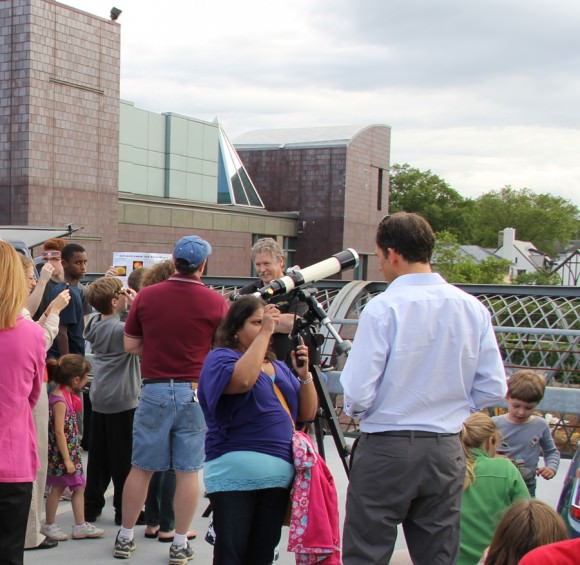
As part of this public outreach program, NASA also sent me special solar glasses to hand out as a safe and alternative way to directly view the sun during all solar eclipses and transits through your very own eyes – but not optical aids such as cameras or telescopes.
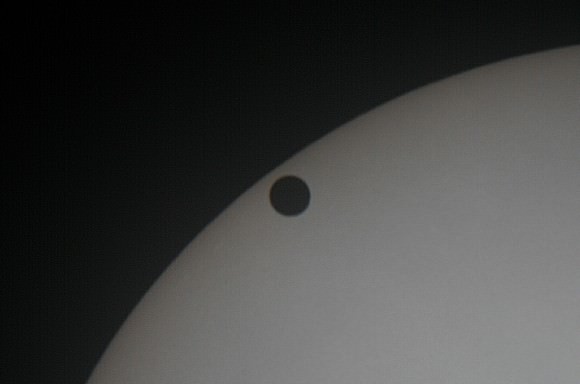
This photo was taken with a Questar telescope at 6:26 p.m. on June 5, 2012 - it’s a stack of eight - 2 second images. Credit: Robert Vanderbei
Altogether the Transit lasted 6 hours and 40 minutes for those in the prime viewing locations such as Hawaii – from where NASA was streaming a live Transit of Venus webcast.
You should NEVER look directly at the sun through any telescopes or binoculars not equipped with special eye protection – because that can result in severe eye injury or permanent blindness!
We in Princeton were quite lucky to observe anything because other astro friends and fans in nearby areas such as Philadelphia, PA and Brooklyn, NY reported seeing absolutely nothing for this last-in-a-lifetime celestial event.
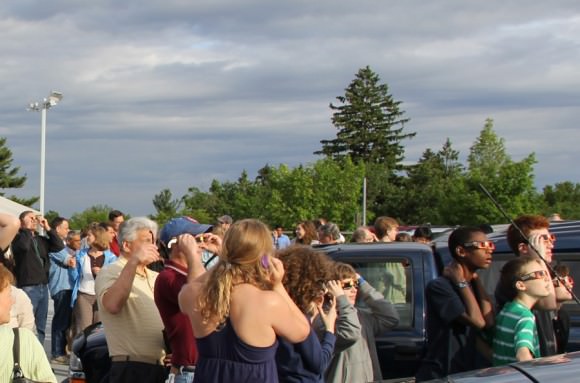
Princeton’s Astrophysics Department organized a series of lectures prior to the observing sessions about the Transit of Venus and how NASA’s Kepler Space Telescope currently uses the transit method to detect and discover well over a thousand exoplanet and planet candidates – a few of which are the size of Earth and even as small as Mars, the Red Planet.
NASA’s Curiosity rover is currently speeding towards Mars for an August 6 landing in search of signs of life. Astronomers goal with Kepler’s transit detection method is to search for Earth-sized planets in the habitable zone that could potentially harbor life !
So, NASA and astronomers worldwide are using the Transit of Venus in a scientifically valuable way – beyond mere enjoyment – to help refine their planet hunting techniques.
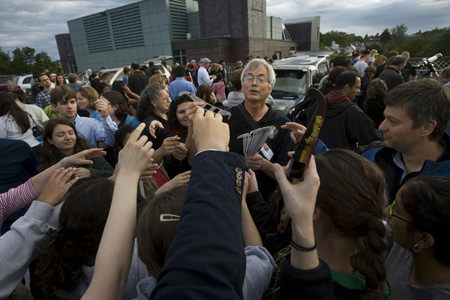
Historically, scientists used the Transit of Venus over the past few centuries to help determine the size of our Solar System.
See more event photos from the local daily – The Trenton Times – here
And those who stayed late after sunset – and while the Transit of Venus was still visibly ongoing elsewhere – were treated to an extra astronomical bonus – at 10:07 p.m. EDT the International Space Station (ISS) coincidentally flew overhead and was visible between more break in the clouds.
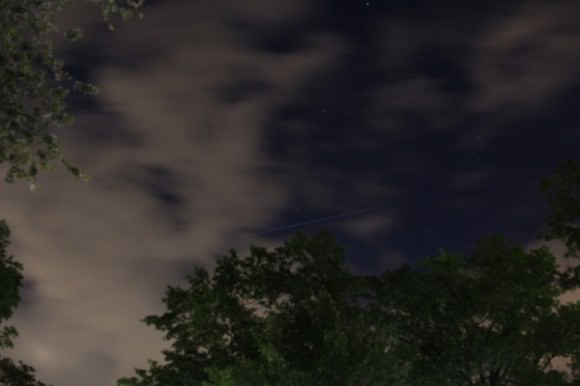
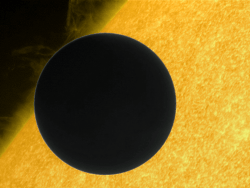
Of course clouds are no issue if you’re watching the Transit of Venus from the ISS or the Hinode spacecraft. See this Hinode Transit image published on APOD on June 9 and enhanced by Marco Di Lorenzo.
This week, local NY & NJ residents also had another extra special space treat – the chance to see another last-in-a-lifetime celestial event: The Transit of Space Shuttle Enterprise across the Manhattan Skyline on a seagoing voyage to her permanent new home at the Intrepid Sea, Air and Space Museum.
Astrophoto: Double Crepuscular Rays
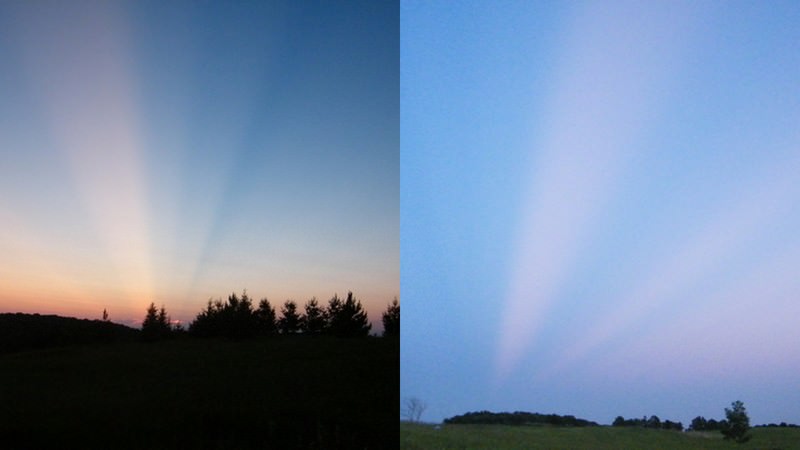
[/caption]
I’m not sure how often this happens, but I’ve never seen it before: crepuscular rays on both the west and east horizon at the same time — or crepuscular and anti-crepuscular rays occurring simultaneously. I’m staying out in the wilds of Minnesota this summer, with great views of both horizons and captured these images last evening, June 9, 2012. The word crepuscular means “relating to twilight,” and these rays occur when objects such as mountain peaks or clouds partially shadow the Sun’s rays, usually when the Sun is low on the horizon. These rays are visible only when the atmosphere contains enough haze or dust particles so that sunlight in unshadowed areas can be scattered toward the observer.
Then occasionally, light rays scattered by dust and haze sometimes appear on “antisolar” point, (the horizon opposite to the setting sun). These rays, called anti-crepuscular rays, originate at the Sun, cross over the sky to the opposite horizon, and appear to converge toward the antisolar point.
Anyone else ever seen this before?
For both crepuscular and anti-crepsucular, the light rays are actually parallel, but appear to converge to the horizon due to “perspective,” the same visual effect that makes parallel railroad tracks appear to converge in the distance. One of the astronauts on the International Space Station actually captured crepuscular rays from orbit, showing how the rays are actually parallel. You can see that image and the description here.
Below are the two images separately. It was a beautiful evening and a thrilling sight.
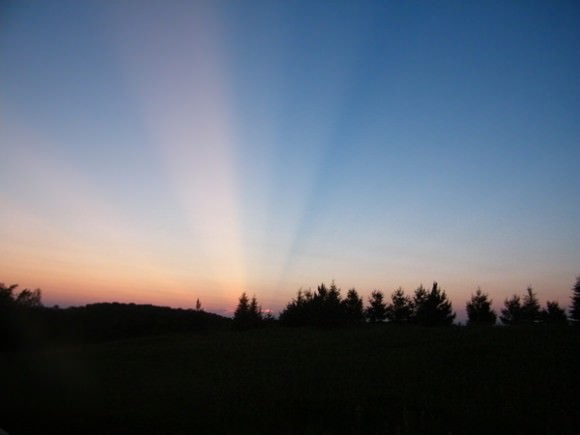
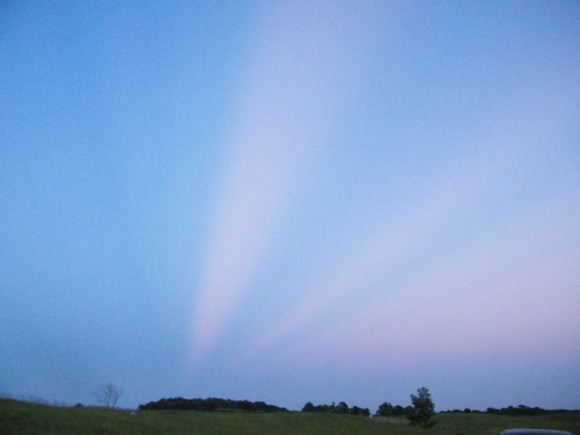
Thierry Legault: One Transit is Not Enough
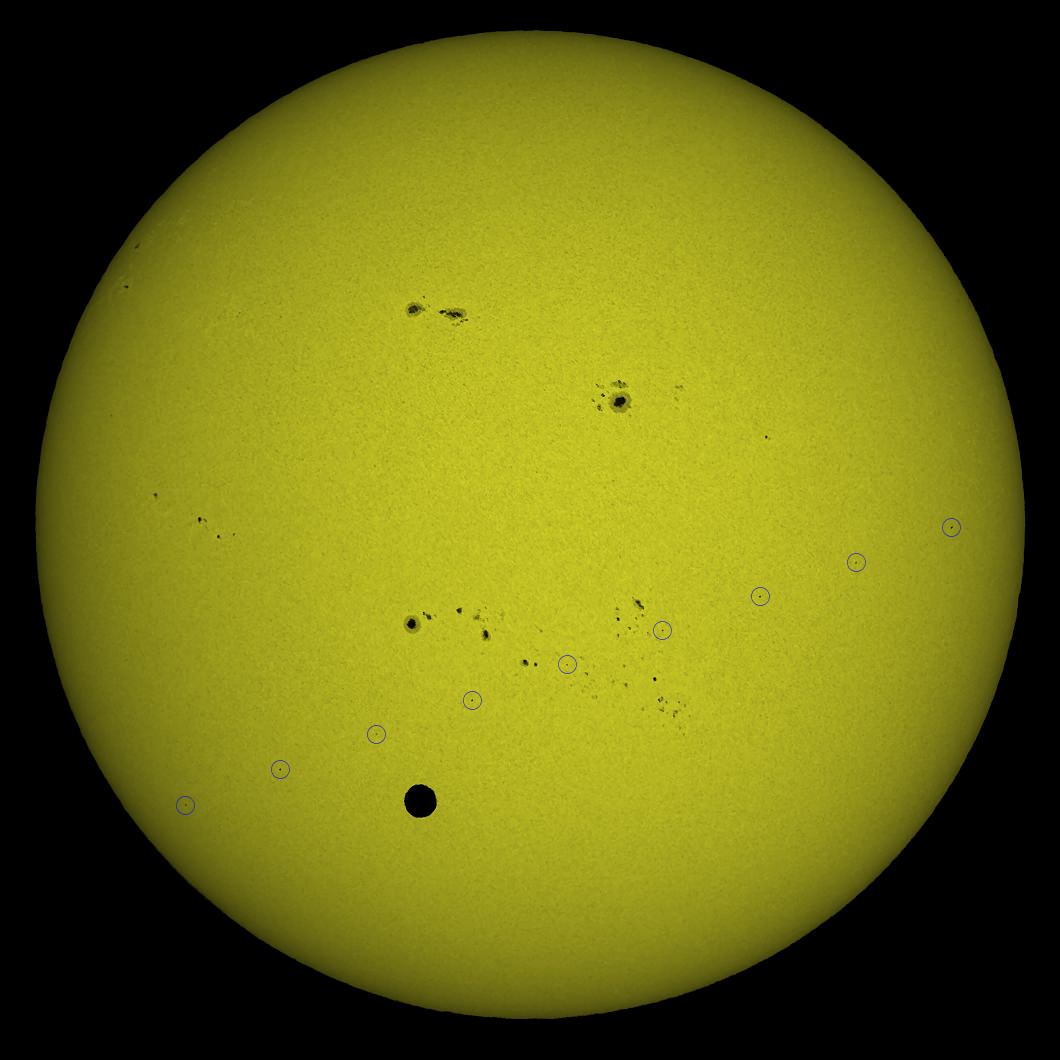
[/caption]
Astrophotographer Thierry Legault had told us he was traveling to Australia for the Transit of Venus, so we knew he had something special planned. But that still didn’t prepare us for the awesomeness of what he has just achieved. During the Transit of Venus, Legault also captured the Hubble Space Telescope moving across the face of the Sun. Not once, but 9 times, during the HST’s transit time of .97 seconds. “Thanks to the continuous shooting mode of the Nikon D4 DSLR running at 10 fps,” Legault said on his website, which shows his new images. Of course, due to the differences in distance from Earth of Hubble vs. Venus, Venus took a lazy 6-plus hours to make its transit. A few giant sunspots also join in the view.
Below see a close-up of the two transits and a look at Legault’s set-up in the Outback of Queensland.
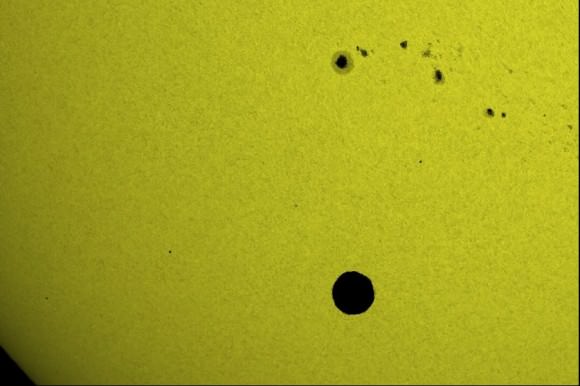
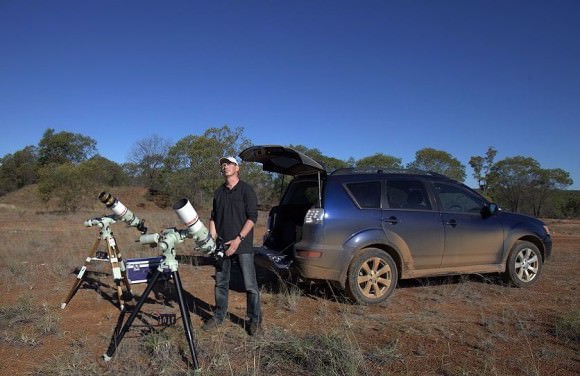
Legault noted that just one of the telescope/camera setups was his. So, he had just one chance of capturing the double transit. And he nailed it.
Here’s the map from CalSky of where the HST transit would be visible, just a thin band across the top of Queensland:
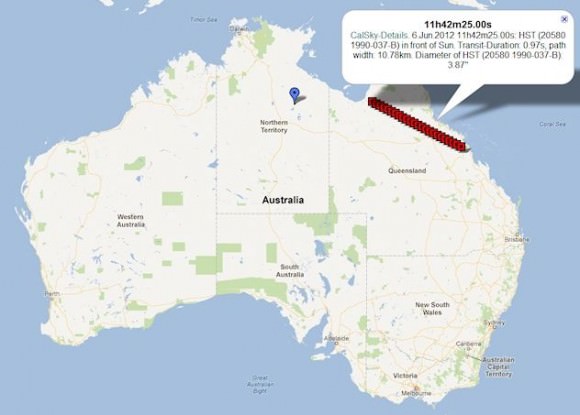
Legault said he has some more images on the way, including the ring of the atmosphere of Venus around the first contact, images of the transit in H-alpha, and the full ring of Venus 24 hours after the transit, so keep checking his website for more fantastic images.
Congratulations to Thierry Legault for a truly amazing and special capture of the Transit of Venus, something that won’t happen again in our lifetimes. And thanks to Thierry for sharing his images with Universe Today.
Amazing Transit of Venus Images From Around the World
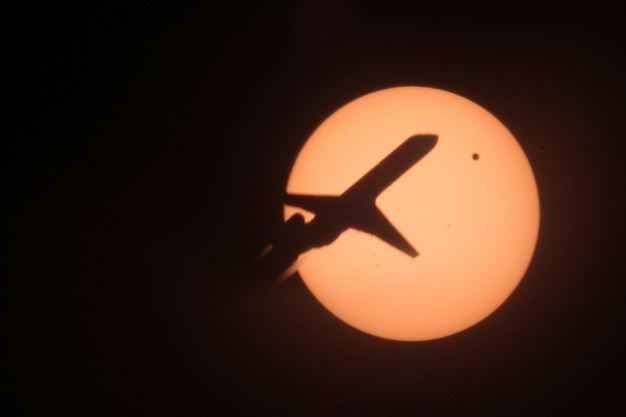
Wow! Amateur astronomers around the world looked to the sky last night and early this morning to observe Venus as it passed across the face of the Sun for the last time this century. The images are coming in fast and furious from what was an awesome event! Our lead image is from Jim Nista in Huntington Beach, California who said on Flickr, “Saw the contrails approaching the Sun’s disk and starting snapping as fast as the Canon 7D could go!”
See more below from all around the world, and also check out some of the first images and videos from last night. You can also watch a replay of our live webcast here. For many of the images from Flickr, click on the images for a higher resolution view.
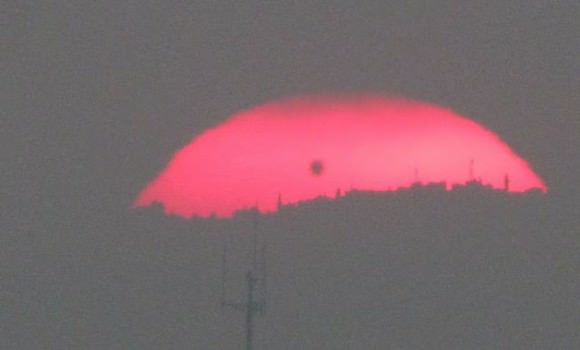
Our friend Gadi Eidelheit from Israel hosted a transit event, taking this sci-fi- looking image, and many more. He has a full write-up on his Venus Transit blog.
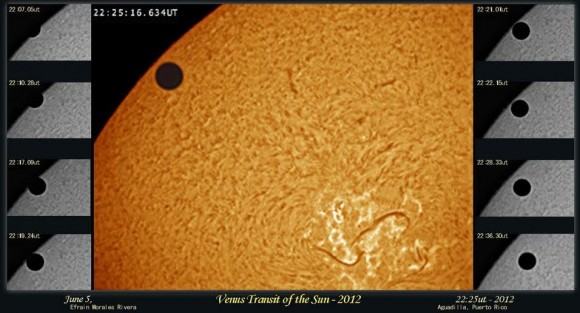
This composite of a sequence of images are from Efrain Morales in Puerto Rico. “Clouds moved out and but the Sahara dust still lingered,” Efrain told Universe Today. “Started my sequence on 22:07ut thru 22:36ut. It was a Spectacular sight.” Equipment: SolarMax40 Refractor, PowerMate 2.5x barlows, P/B LX200ACF 12 in. OTA, CGE mount, PGR Flea3 Ccd, Astronomik Ir filter.
Kaizad Viraf Raimalwala from the Purdue University Astronomy Club in Indiana sent in this image: “In this picture, we were using an 8″ Meade LX-200 and piggybacked my friend’s Nikon D7000 on it. Took this picture myself with my Nikon D90,” he told us. “Had a lot of cloud cover at start so we missed the ‘teardrop’ effect and since we were in West Lafayette, Indiana, the sun set long before Contact 3 and 4.”
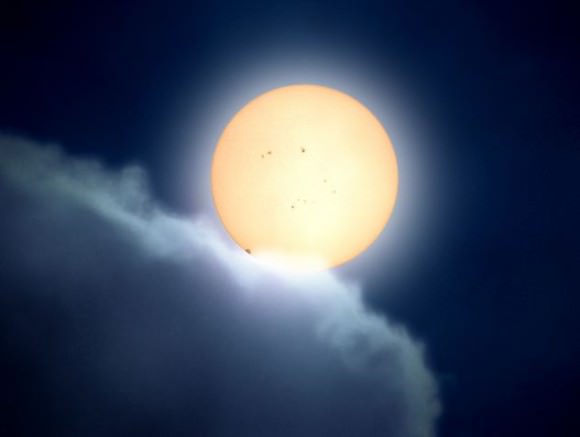
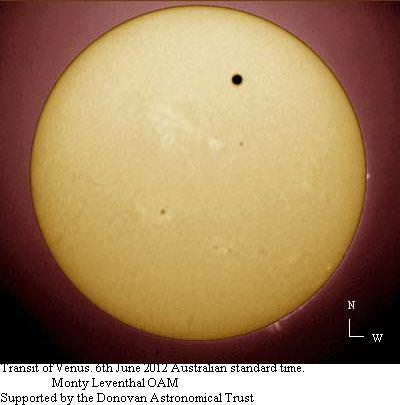
Renowned amateur astrophotographer Monthy Leventhal from Australia sent us this ‘digital filtergram’ of the Venus. He said seeing conditions were poor, as it was very cloudy, with showers, but he still managed a great shot. Camera: Canon 600D, Filter: H-alpha 6Å, Telescope: Solaris.
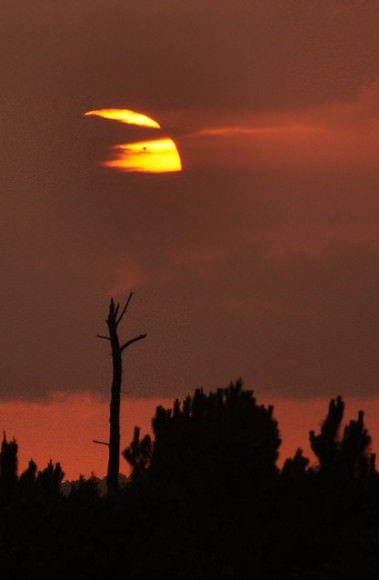
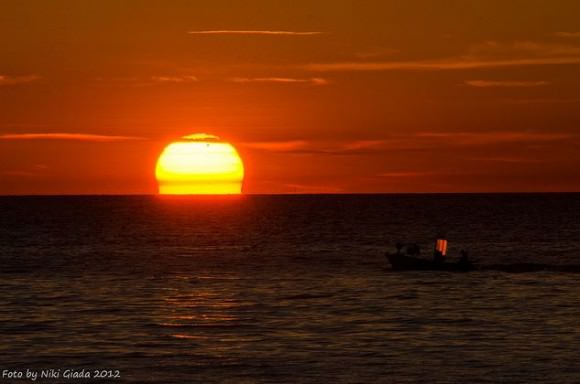
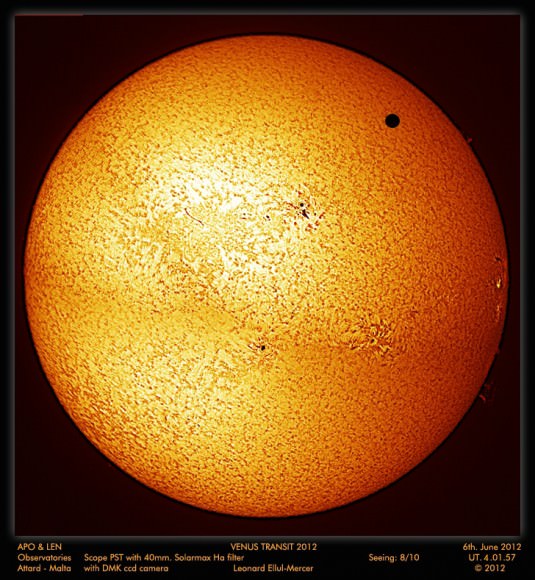
Leonard E. Mercer from Malta wrote us, “Here is one of my images taken today at 6.01.57 local time (UT.04.01.57). The conditions were very favourable. I didn’t expect such sharpness considering the sun was so low. From our region we could only view the end of the transit. But still I am very happy with the resulting image.”
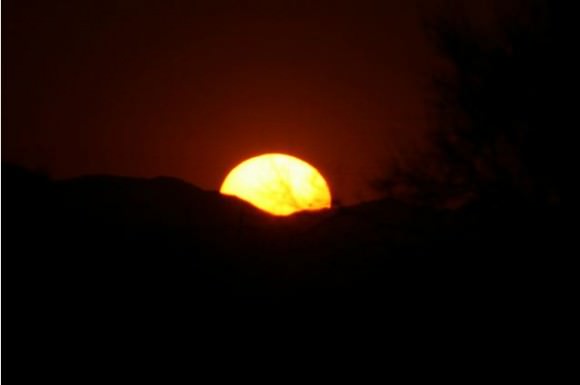
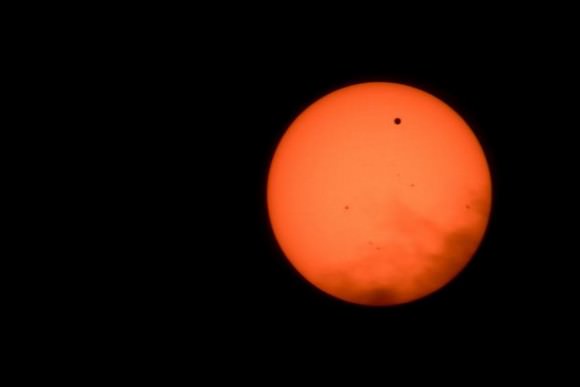
This one from Dave Griffith in Canada, who said, “Made at 6:05 PM with a Pentax K-r, a Takumar-A 2x tele-converter, a Sigma 100-300mm 1:4.5-6.7 DL lens, and a solar filter made from a sheet of Seymour Solar Optical Thin Film. The image was made on the side of Highway 63 between Fort McMurray and Edmonton. This was taken at ISO 100 with an aperture of f/11 and an equivalent focal length of 900mm. A brief tale about how I lucked out in even seeing the sun today is posted here.
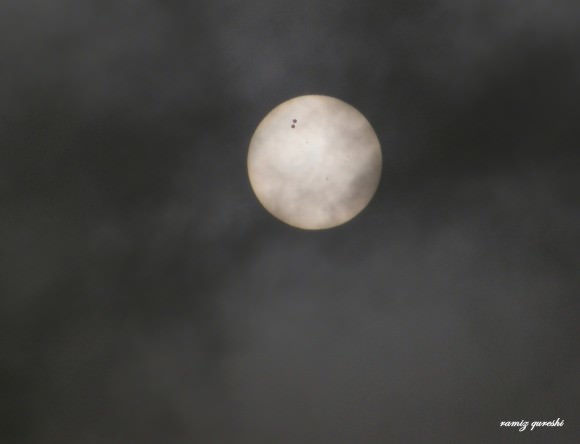
Ramiz Qureshi from Pakistan wrote to tell Universe Today, “We were badly clouded out here in Karachi, Pakistan for the past 2 days. In an awesome coincidence, the clouds stayed still on the morning of transit, doubling as an atmospheric filter. This allowed us to observe the Sun plainly with our naked eyes as it rose with the transit already in progress.” Qureshi added that the two silhouettes actually is a composite/overlap of two shots taken an hour apart.
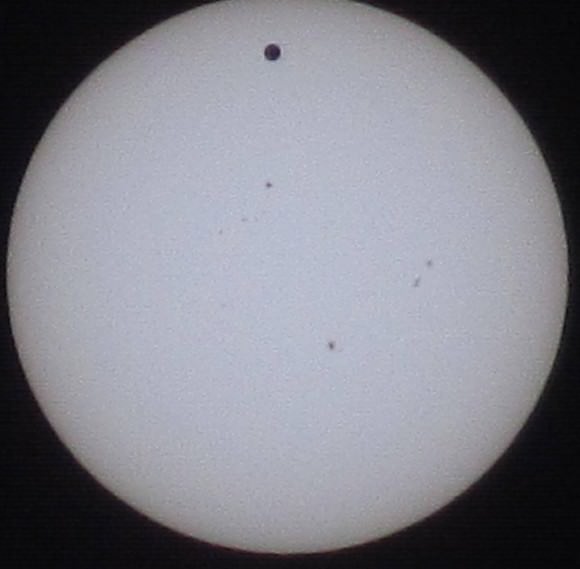
Saeed Amiri from Tehran, Iran took this image at 8:12 AM local time using a Canon PowerShot SX210 with Focal length: 70 mm, Exposure time: 1/640 sec, ISO: 100
F-stop: f/5.9, Filter: Mylar.
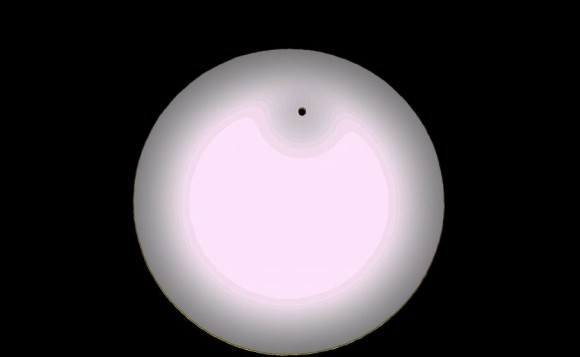
Jukka Seppälä from Finland wrote to show us his artistic views of the Venus transit. “I have tried to get some kind of artistic impression by manipulating photos with extreme exposure, contrast, brightness levels etc.”
Patrick Cullis provided this video of an airliner joining in on the transit action:
https://vimeo.com/43523342
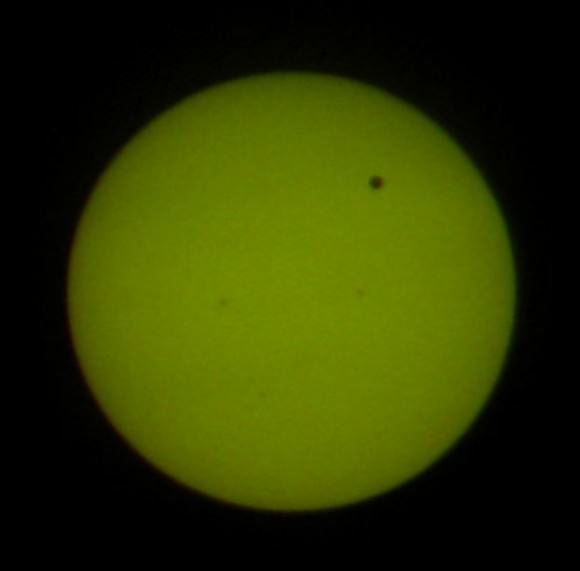
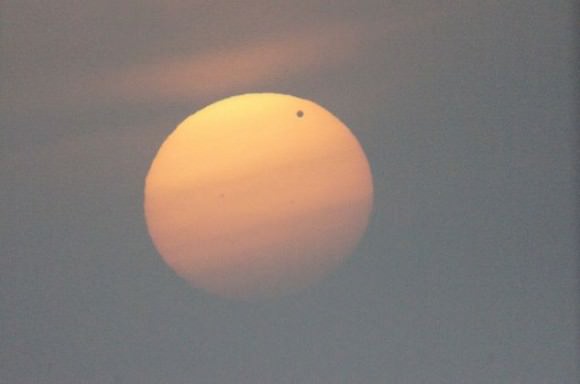
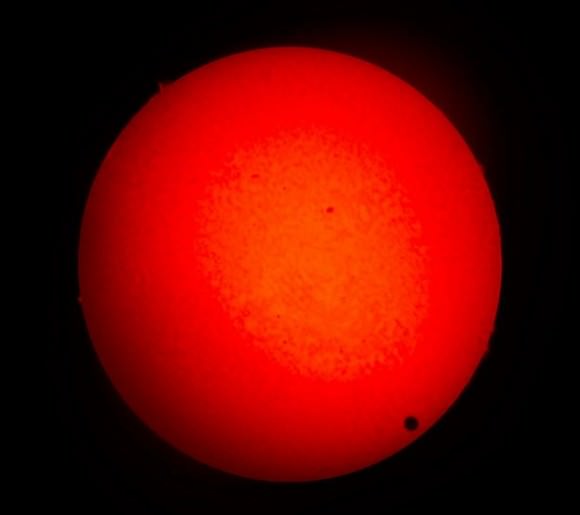
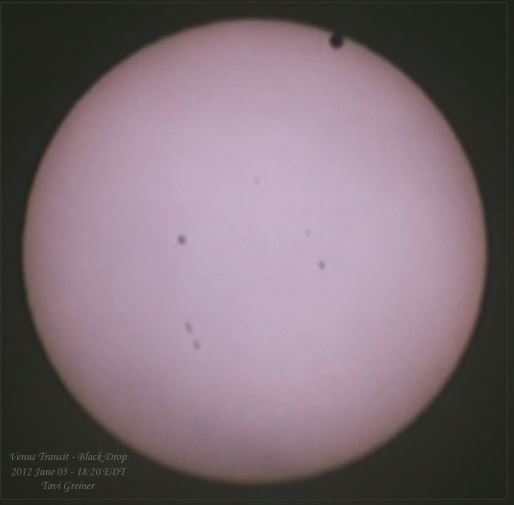
Another phenomenon observed during the transit included the ‘black drop’ effect – the small black teardrop shape that appears to connect Venus to the limb of the Sun just after it has fully entered the solar disc and again later, when it begins to leave the disc. Tavi Greiner captured it!
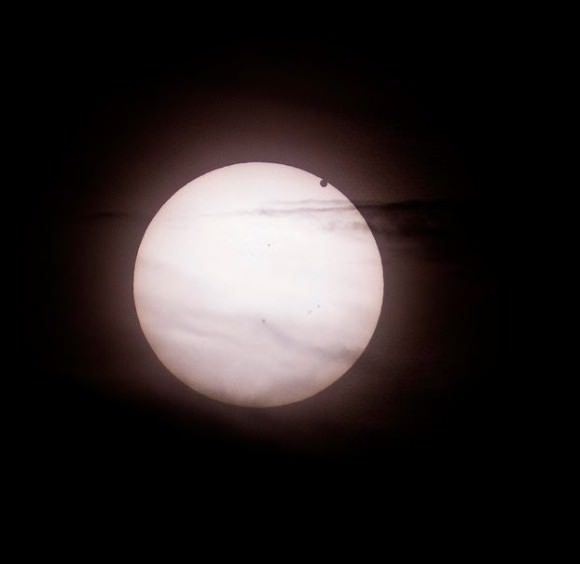
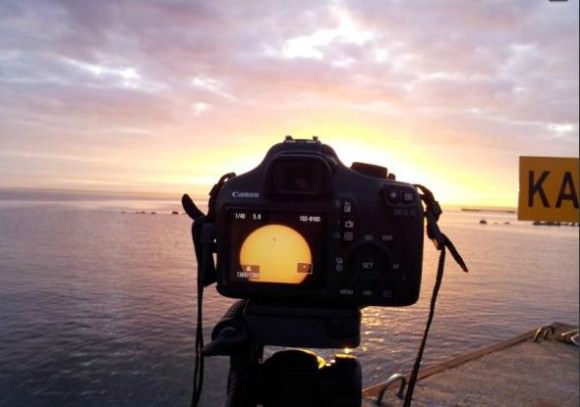
Thanks to everyone who sent in images or posted them to our Flickr page. As always, you can see more great images at our pool page on Flickr.
Stunning Timelapse: Spacecraft Capture the Transit of Venus
Here’s the entire 7-hour transit of Venus across the face of the Sun – shown in several views — in just 39 seconds, as seen by the Solar Dynamics Observatory on June 5, 2012. This view is in the 171 Angstrom wavelength, so note also the the bright active region in the northern solar hemisphere as Venus passes over, with beautiful coronal loops visible. The transit produced a silhouette of Venus on the Sun that no one alive today will likely see again. With its specialized instruments SDO’s high-definition view from space provides a solar spectacular!
Scott Wiessinger from NASA Goddard’s Scientific Visualization Studio wrote this morning to tell us, “If you have the space and the bandwidth, I really recommend downloading this large file on the SVS to view. YouTube compression is hard on solar footage, so it looks even better when you watch it at true full quality.”
Below is a composite image from SDO of Venus’ path across the Sun, as well as another great timelapse view from ESA’s PROBA-2 microsatellite:
[/caption]
This movie shows the transit of Venus as seen from SWAP, a Belgian solar imager onboard ESA’s PROBA2 microsatellite. SWAP, watching the Sun in EUV light, observes Venus as a small, black circle, obscuring the EUV light emitted from the solar outer atmosphere – the corona – from 19:45UT onwards (seen on the running timer on the video). At 22:16UT – Venus started its transit of the solar disk.
Venus appears to wobble thanks to the slight up-down motion of Proba-2 and the large distance between the satellite and the Sun.
The bright dots all over the image, looking almost like a snow storm, are energetic particles hitting the SWAP detector when PROBA2 crosses the South Atlantic Anomaly, a region where the protection of the Earth magnetic field against space radiation is known to be weaker.
And as if the Sun is just showing off, a Coronal Mass Ejection is visible as well towards the end of the video, seen as a big, dim inverted-U-shape moving away from the Sun towards the bottom-right corner. This is a coronal mass ejection bursting out from the Sun.

